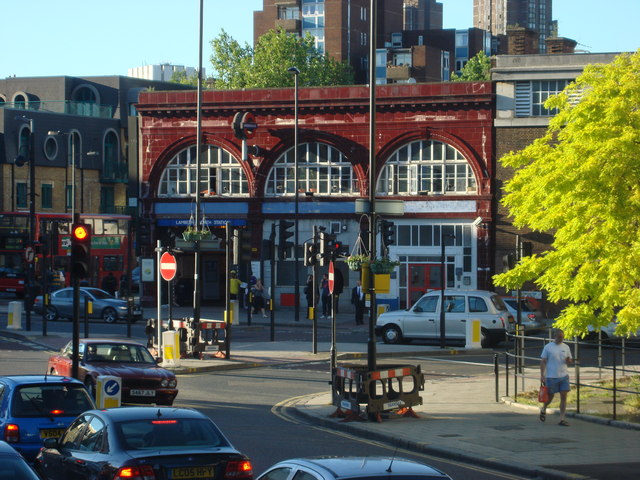Designed by Leslie Green, the station was opened by the Baker Street & Waterloo Railway on 10 March 1906, with the name Kennington Road. It served as the temporary southern terminus of the line until 5 August 1906, when Elephant & Castle station was opened. The station's name was changed to Westminster Bridge Road in July 1906 and it was again renamed, to Lambeth North, in April 1917. At 03:56 on 16 January 1941, a German "Satan" 1800 kg general-purpose bomb hit a hostel at nearby 92 Westminster Bridge Road. The shock-wave severely damaged the southbound platform tunnel injuring 28 people sheltering there, one of whom died in hospital 15 days later. Thirty-seven rings of the damaged tunnel had to be completely replaced, 15 partially replaced, and 86 feet of platform rebuilt. Traffic through the station resumed after 95 days.
The name is recorded in 1062 as Lambehitha, meaning 'landing place for lambs', and in 1255 as Lambeth and North Lambeth is recorded in 1319 as North Lamhuth. Lambeth Palace is located opposite the Palace of Westminster. The two were linked by a horse ferry across the Thames. Until the mid-18th Century the north of Lambeth was marshland, crossed by a number of roads raised against floods. With the opening of Westminster Bridge in 1750, followed by the Blackfriars Bridge and Vauxhall Bridge, a number of major thoroughfares were developed through Lambeth, such as Westminster Bridge Road, Kennington Road and Camberwell New Road. This is the nearest station to the Imperial War Museum. There are two tracks in separate tunnels The station has two lifts and a spiral staircase connecting the street level to platform level (about 70 feet below), the staircase is not for the faint of heart. The station has lifts, payphones, and wi-fi.
Connections: London Buses routes 12, 53, 59, 148, 159 and 453 and night route N109 serve the station.


